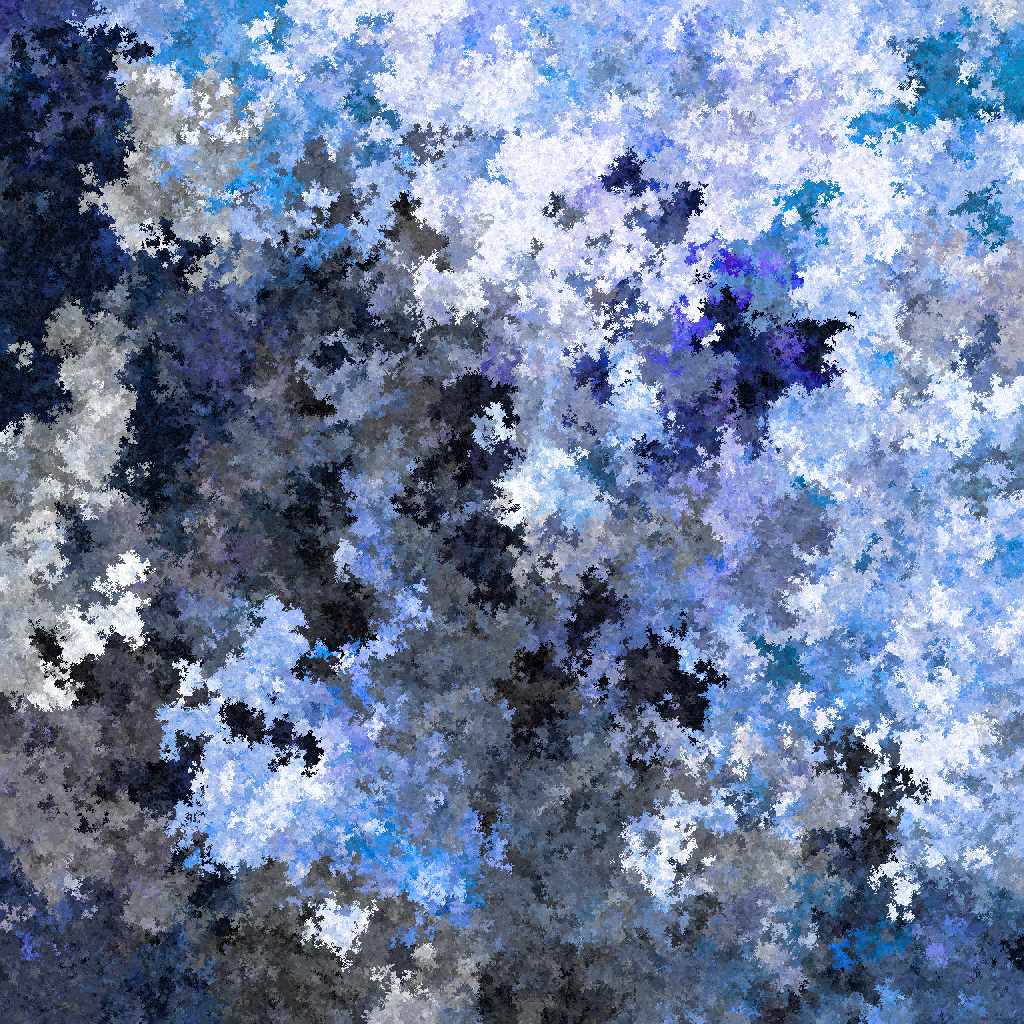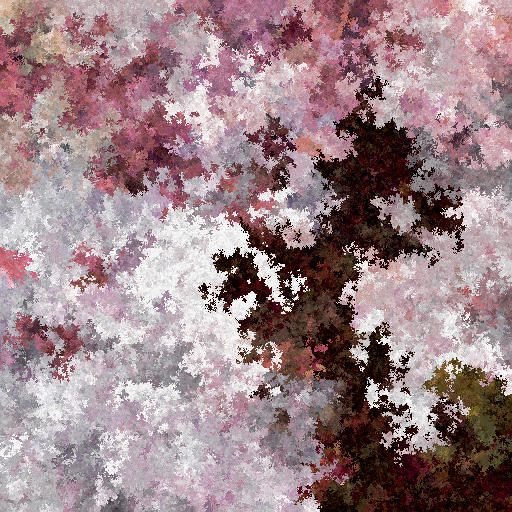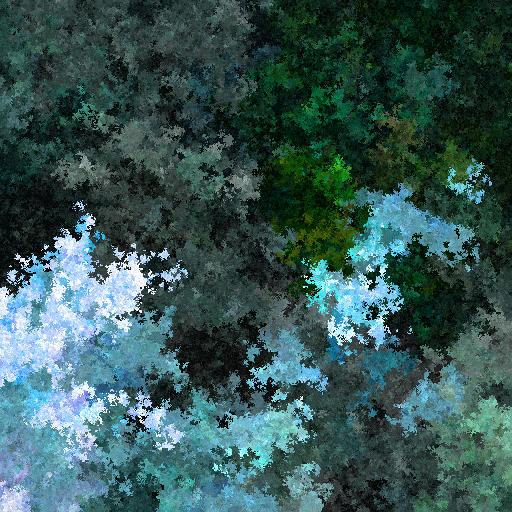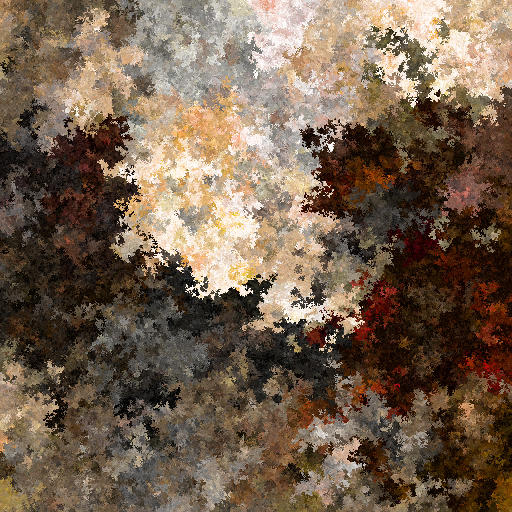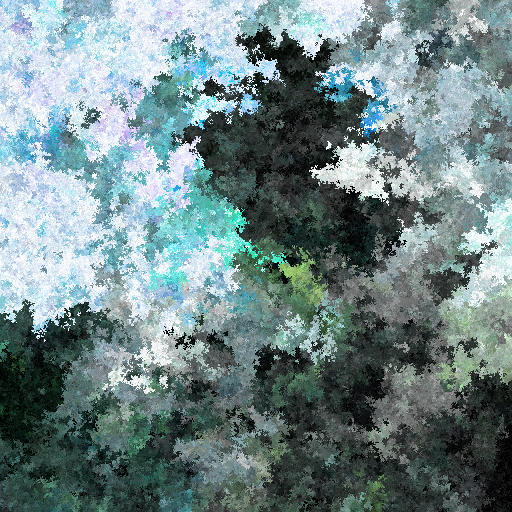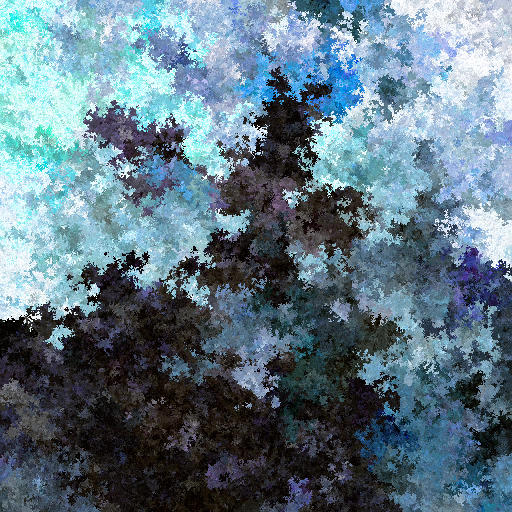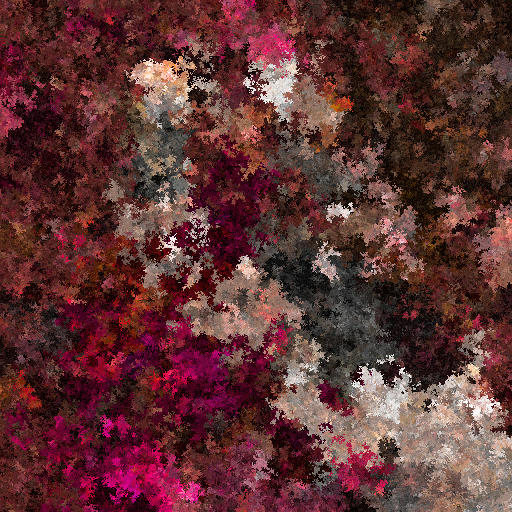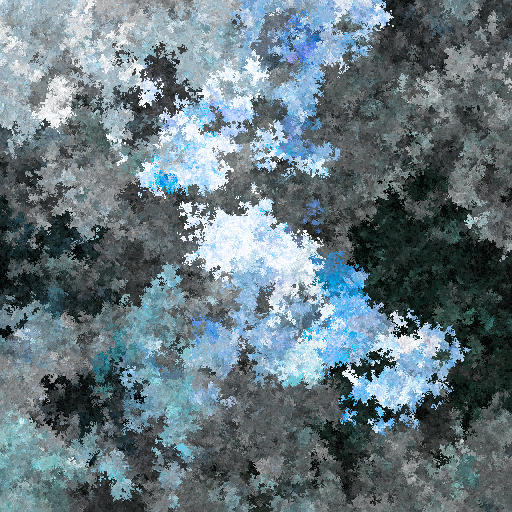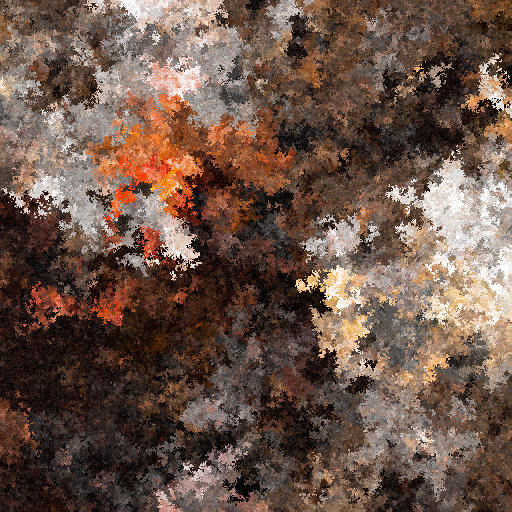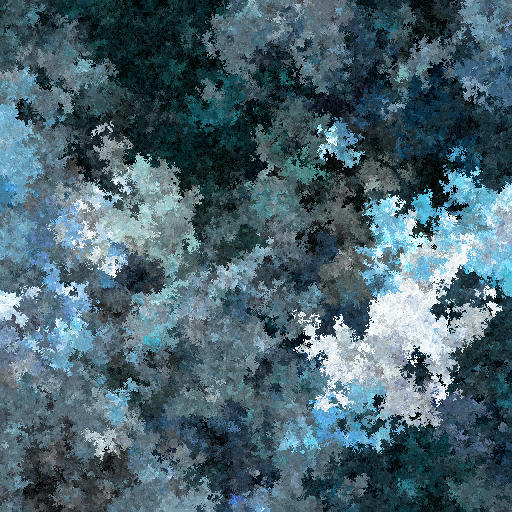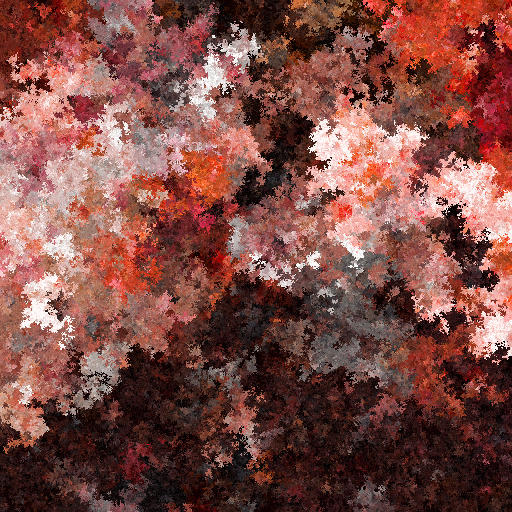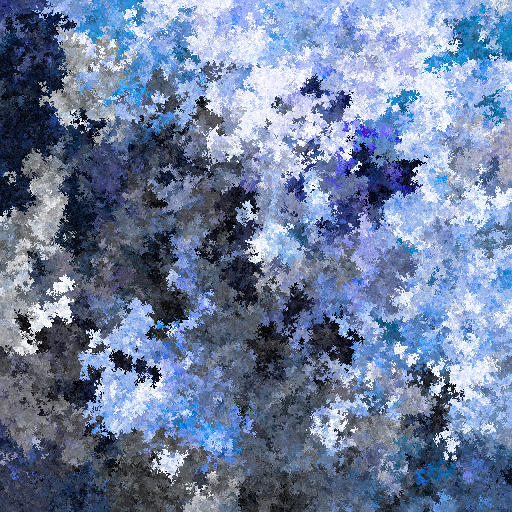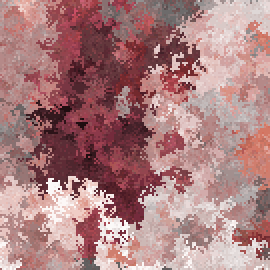
Diviso 4
1988
Diviso 4 (divided by 4) is a random generator of images, created for producing visual configurations with as much freedom as possible. The goal was to create very simple rules that were able to generate shapes and color combinations, different and unpredictable each time.
Core algorithm
A square is colored and randomly divided into four parts which can each undergo a color transformation:
- acquisition of one of the adjacent colors;
- random variation of the chromatic components;
- chromatic inversion (complementary color).
Further subdivisions and new color variations are applied to the four obtained squares, and this procedure continues until reaching single pixels.
To not overly influence the results, real aesthetic rules were not envisaged beyond that of chromatic inversion, which was made much less likely. This does not always guarantee agreeable results, but allows for some variability in the configurations. Some images could possibly be more effective and evocative in cultures or perceptual systems other than our own.
Code biography
- 1988
- First version prepared as a graduation project at the Accademia di Belle Arti di Brera (Academy of Fine Arts of Brera). Programmed in Turbo Pascal for an MSX2 computer with 256x424 interlaced pixels and 256 predefined colors.
- Exhibition at the conference “Art and Science” organized by the Bertolt Brecht Cultural Society of Milan.
- 1989
- Publication in the exhibition catalog “Beni mobili” (Movables) edited by Careof. However, the work on display was “Disegno e campitura” which was terminated after the catalog’s printing.
- 1997
- Java (applet) version with 512x512 pixel resolution and with a limit of 256 predefined colors.
- 2010-11
- Processing version offering automatic parameter variation and display of the resulting animation.
- 2016
- JavaScript version with the addition of an option to save the obtained image.
- 2021
- Resumption of the HSL version (operating on tone, saturation, and brightness values) that had been started in 1988 and abandoned due to long processing times.
- The results of the HSL version were used to mint on Hic et Nunc (now Teia) the NFTs of a series of static images and an interactive animation.
- 2022
- In the April issue, the Danish magazine Prosabladet dedicates the Kunstpause column to me using Diviso4hsl #11 [pp. 20-21].
Photos of early versions
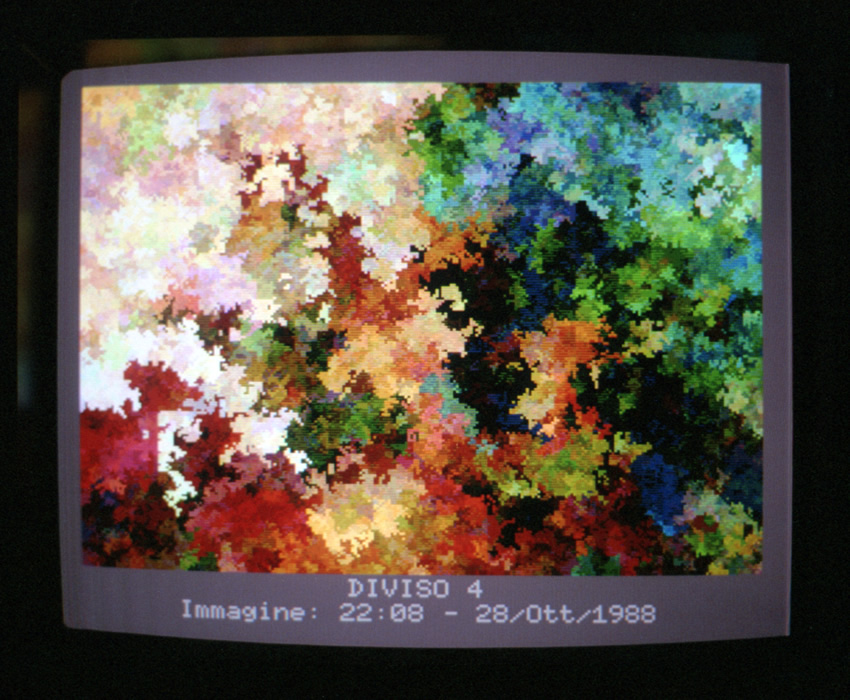
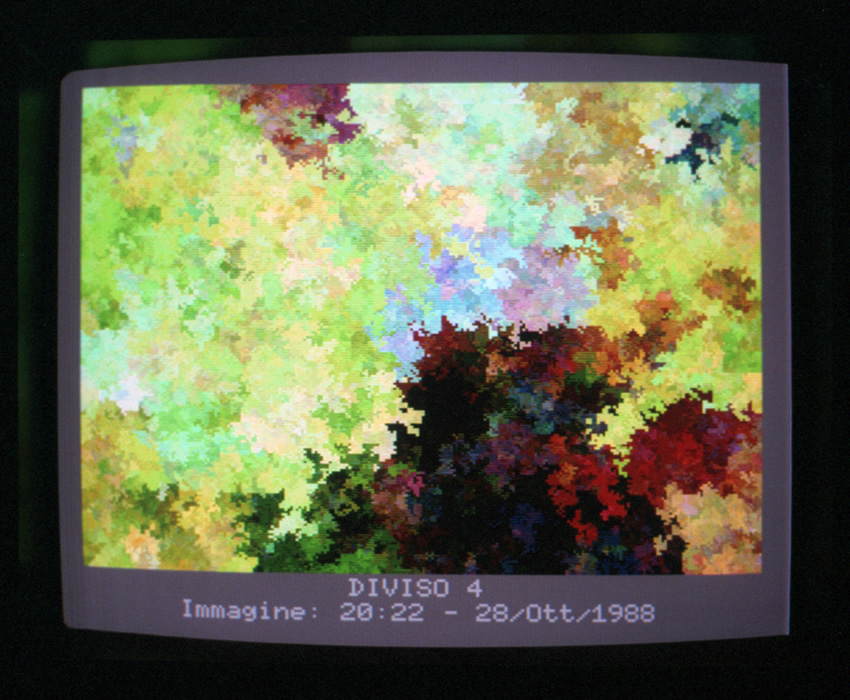
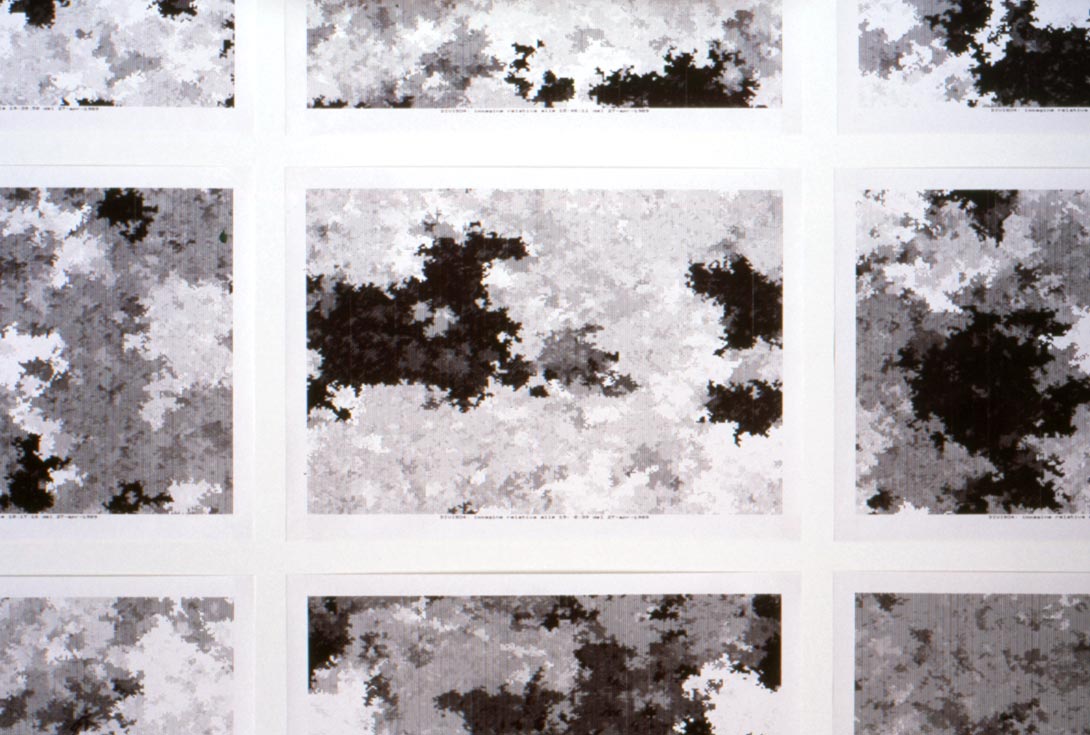
Images of the 2016 version
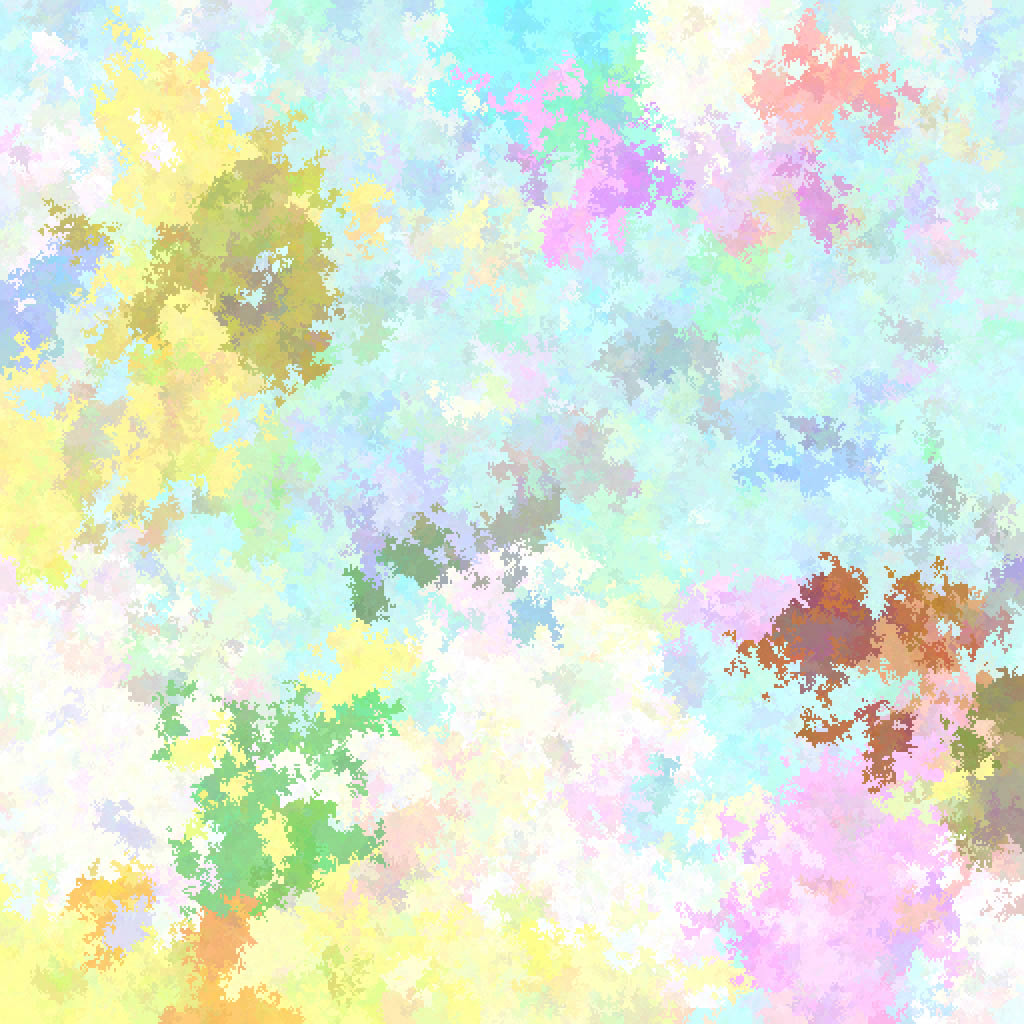
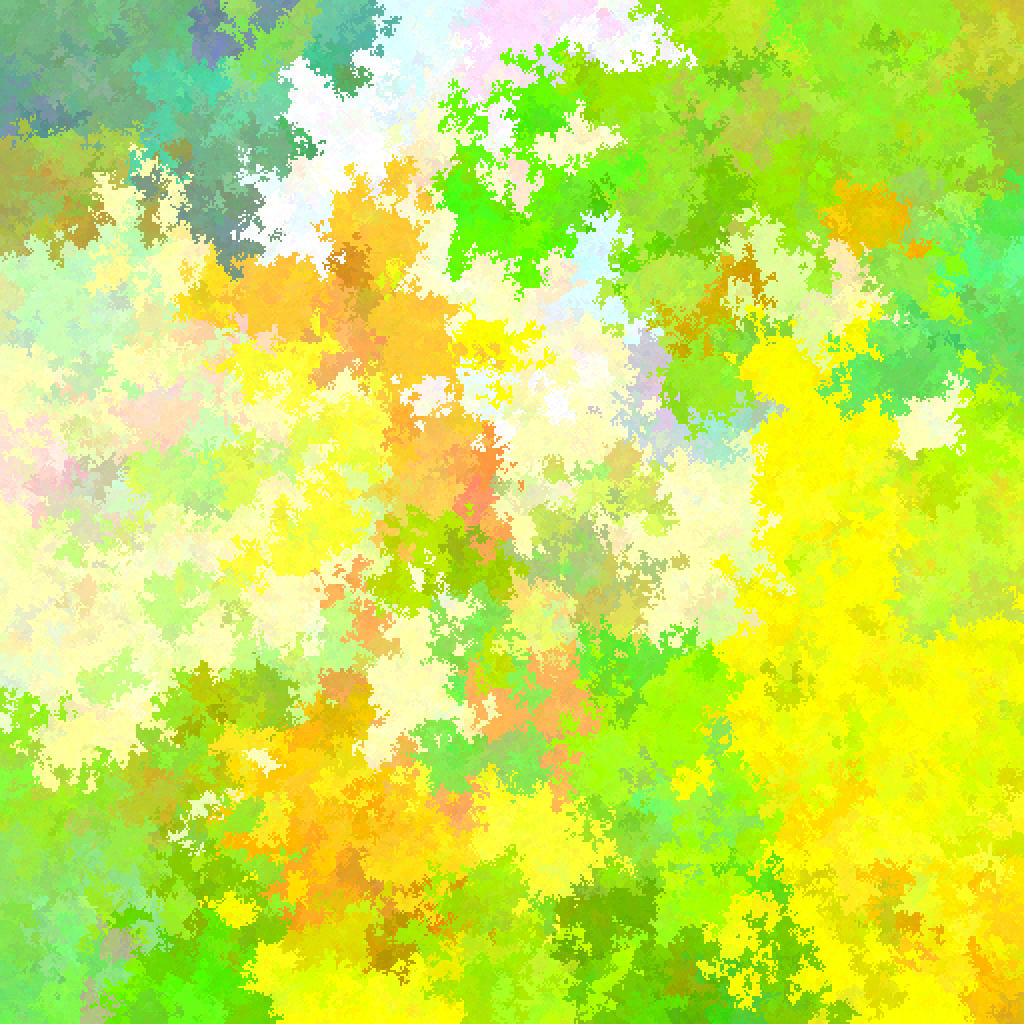
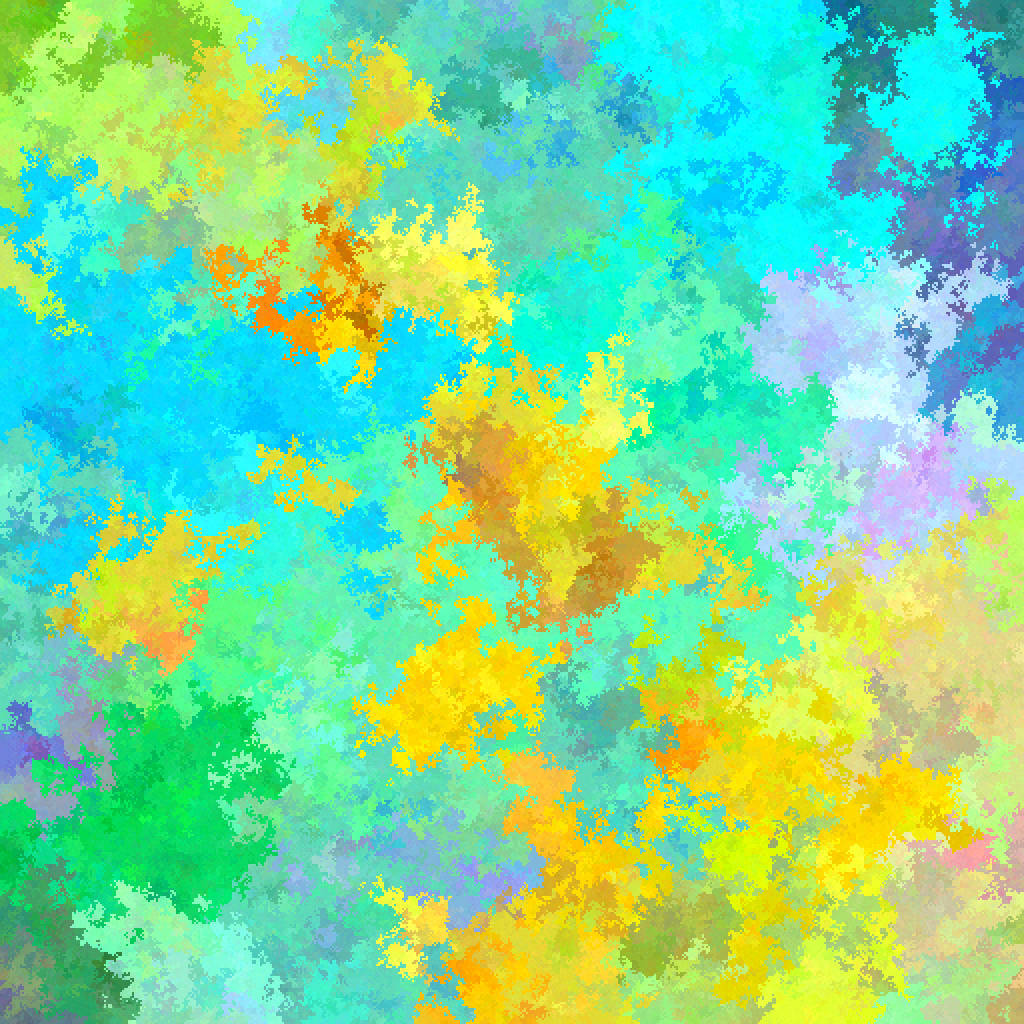
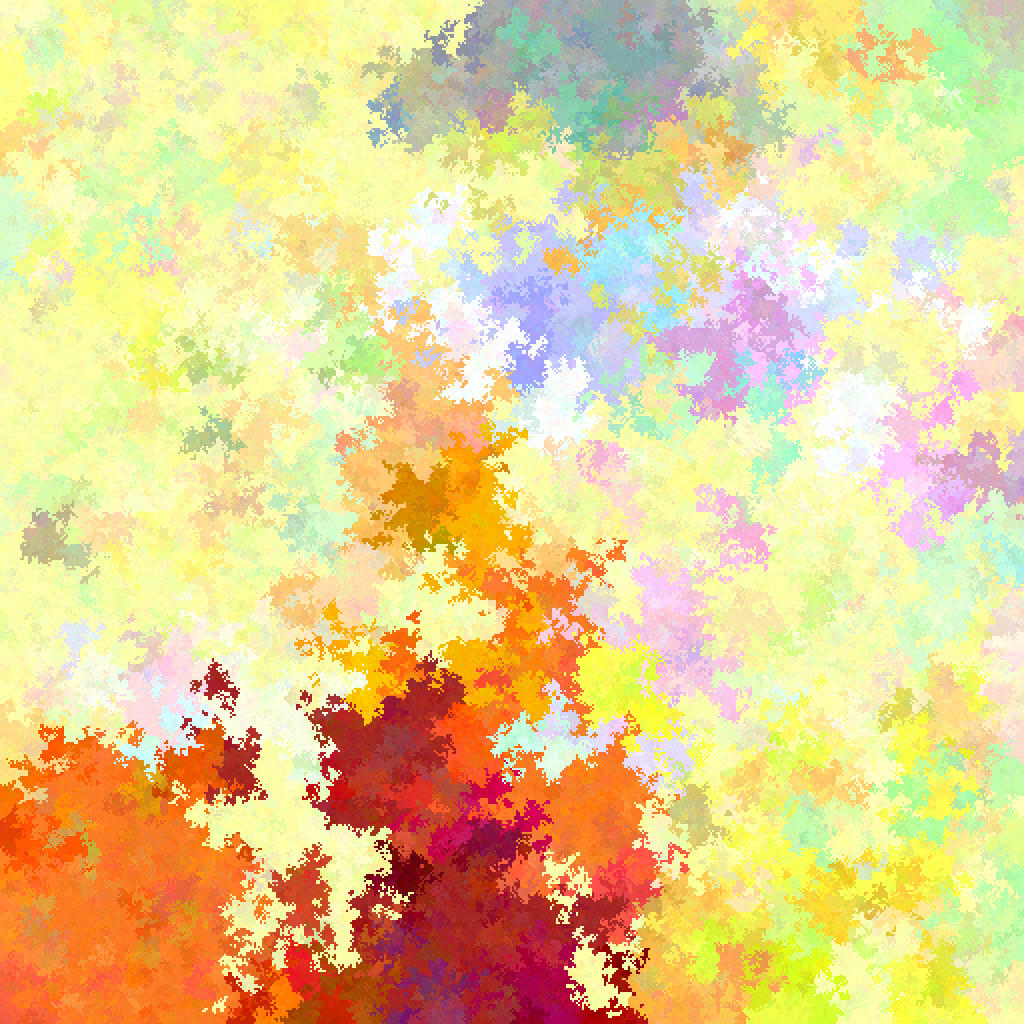
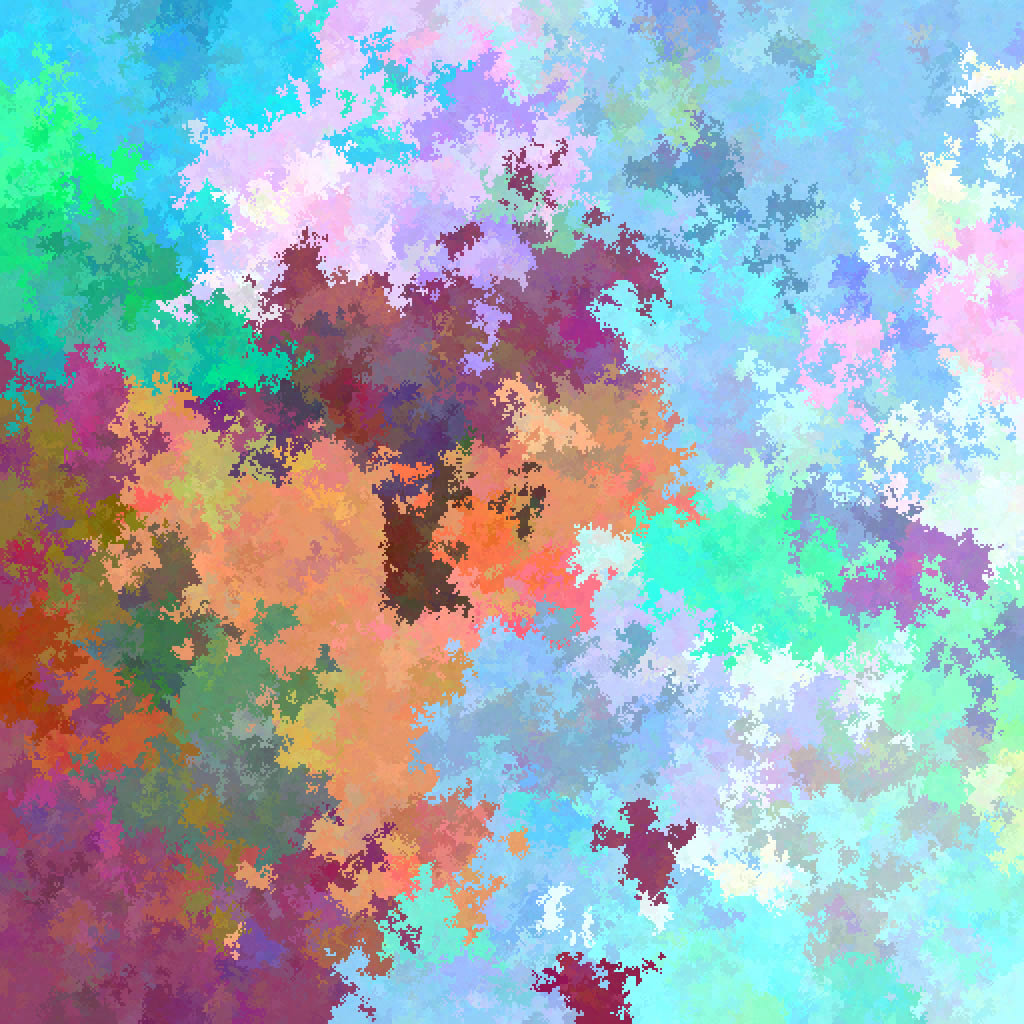
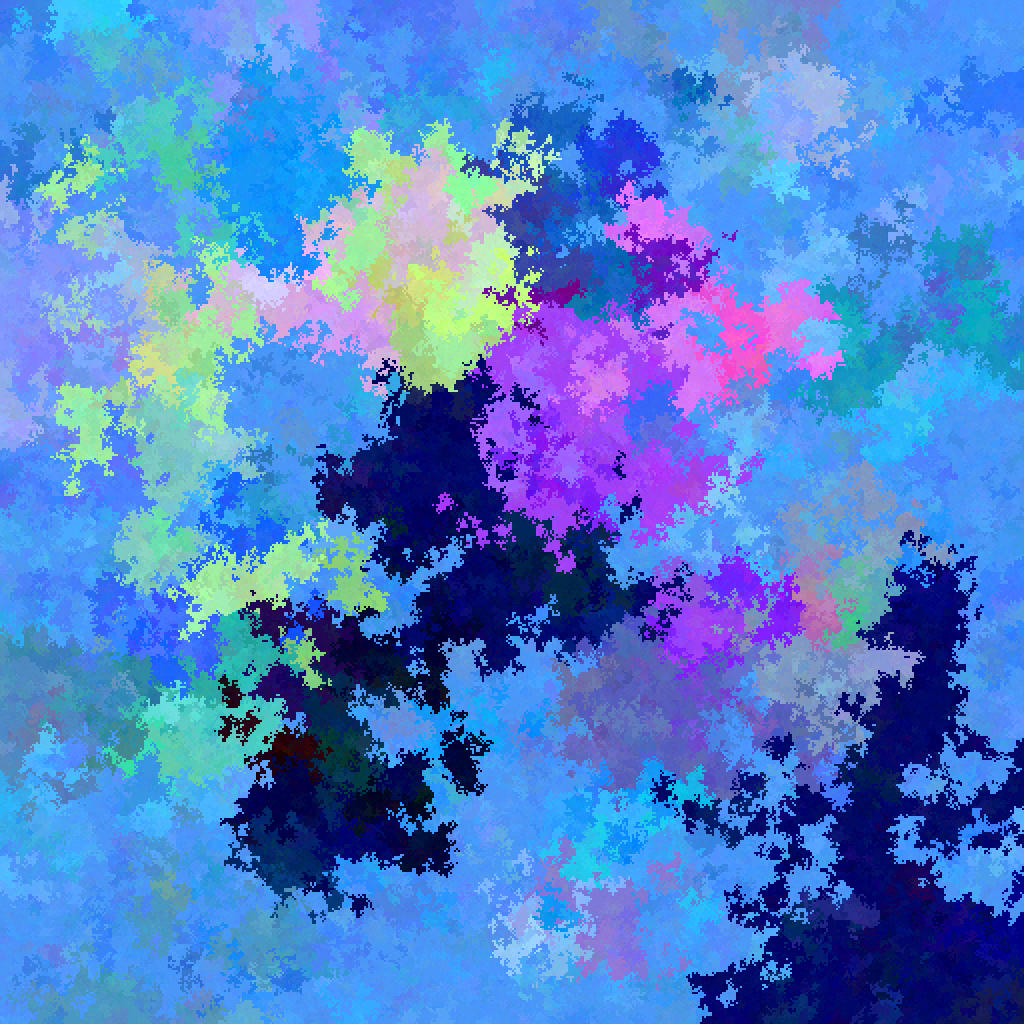
JavaScript executable of 2016

HSL version
Instead of changing the red, green, and blue chromatic components of the pixels, the algorithm operates on tone, saturation, and lightness values. For the NFT drop, the rules were further simplified by eliminating the third possible operation (chromatic inversion).

